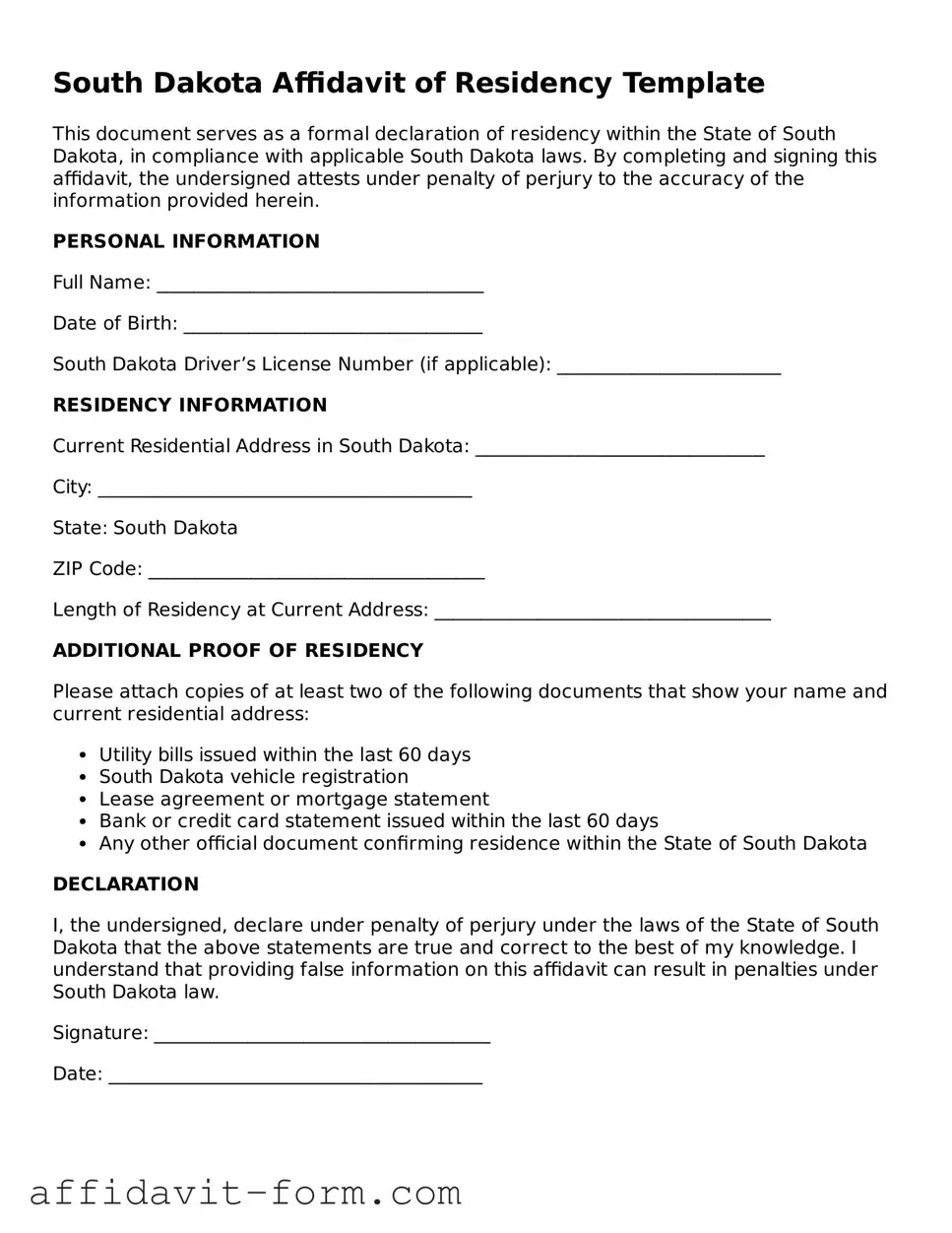South Dakota Affidavit of Residency Template
This document serves as a formal declaration of residency within the State of South Dakota, in compliance with applicable South Dakota laws. By completing and signing this affidavit, the undersigned attests under penalty of perjury to the accuracy of the information provided herein.
PERSONAL INFORMATION
Full Name: ___________________________________
Date of Birth: ________________________________
South Dakota Driver’s License Number (if applicable): ________________________
RESIDENCY INFORMATION
Current Residential Address in South Dakota: _______________________________
City: ________________________________________
State: South Dakota
ZIP Code: ____________________________________
Length of Residency at Current Address: ____________________________________
ADDITIONAL PROOF OF RESIDENCY
Please attach copies of at least two of the following documents that show your name and current residential address:
- Utility bills issued within the last 60 days
- South Dakota vehicle registration
- Lease agreement or mortgage statement
- Bank or credit card statement issued within the last 60 days
- Any other official document confirming residence within the State of South Dakota
DECLARATION
I, the undersigned, declare under penalty of perjury under the laws of the State of South Dakota that the above statements are true and correct to the best of my knowledge. I understand that providing false information on this affidavit can result in penalties under South Dakota law.
Signature: ____________________________________
Date: ________________________________________
